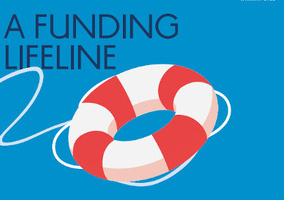Some 60% of civil society organisations received unrestricted or core funding from grantmakers in 2022 compared to less than half (46%) in 2019.
This is evidence that funders are more relaxed with grantmaking since the pandemic, according to the new Third Sector Trends report 2022.
Pressure to provide impact assessments also fell from 55% in 2019 to 32% in 2022.
Third Sector Trends has conducted its report into community organisations in England and Wales for 2022. It has surveyed the voluntary, community and social enterprise sector every three years since 2010.
The research is based on 6,071 survey responses from community organisations.
Pressure from funders fallen
Expectations that civil society organisations should be innovative dropped from 74% to 50%.
This was presumably in recognition that civil society organisations were doing enough by navigating the Covid-19 pandemic, the report finds.
Some 40% of organisations even reported that grantmakers approached them to see if they required financial support.
Rob Williamson, chief executive of Community Foundation Tyne & Wear and Northumberland, said: “The pandemic sped up the modernisation of grant funding through trust-based, less restrictive models increasingly focused on core funding which is a good thing. As funders we need to continue to work and flex alongside the sector to ensure the best outcomes for our communities.”
Charities trading activity reduced
Self-generated trading includes the delivery of services that clients pay for (such as childcare or community cafes), production and sale of goods and more.
About 60% of organisations earn some of their income by delivering contracts or the trading of goods and services, according to the report.
Trade has fallen slightly from 68% to 66% in the organisations. The proportion of organisations that earn more than 80% of their income from trading activity has fallen since 2013 from 20% to 13%.
This drop in trading activity is due to the pandemic, the report concludes, as many organisations stopped or reduced it during lockdowns.
Optimism about the future
Despite the pandemic, more organisations hold reserves than in the last survey, with the figures going from 76% in 2019 to 83% last year.
Though current difficulties with the cost-of-living crisis remain, organisations are looking optimistic about the future of their finances.
Some 33% expect their income to rise over the next two years and 46% think it will stay the same.
In 2019, 32% of organisations expected their income would rise, but during the pandemic in 2020 an interim survey prediction found this dropped to 13%.
Some 21% think income will fall, with 5% thinking it will fall substantially.
Organisations income rises to highest level
However, 18% reported that income had risen – the highest level since Third Sector Trends surveys began 12 years ago.
Report author, Durham University Professor Tony Chapman, said: “Sector over-optimism is not a bad thing because it drives enthusiasm and commitment. But when hopes are dashed, it can make people in the sector feel disappointed…
“Economic conditions are precarious. But this is neither a ‘perfect storm’ nor an ‘existential crisis’. The third sector is more robust than many commentators think. But there will be a mix of winners and losers as social market conditions change”.
The Third Sector Trends 2022 report was funded by Community Foundation Tyne & Wear and Northumberland, Power to Change, Barrow Cadbury Trust and Millfield House Foundation.
Related articles












